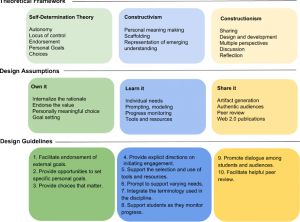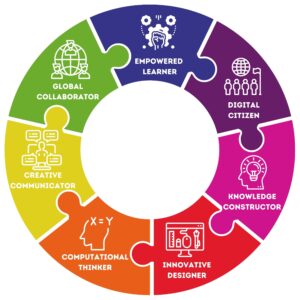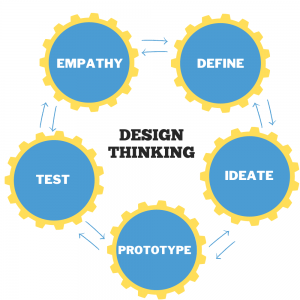About this site
Purpose & Construction of this Site
Purpose
In today’s increasingly digital world, teachers must now ensure that students possess the technology literacy skills needed to be successful in both educational and professional settings. To support this goal, North Carolina became the 14th state to adopt the International Society for Technology Education’s Student Standards in 2019. As new digital tools are continually being developed for collaboration, product creation, and learning, it challenges professionals to remain current with all the educational technologies available to them and their students.
Beginning in Spring 2020, Master of Arts in Educational Technology, Innovation, and Entrepreneurship program students and faculty designed Ed Tech Connect NC: a one-stop digital hub to support North Carolina educators implementing the ISTE Student Standards by providing flexible instructional ideas and easily accessible ed tech for their instruction. The hub also serves as a learning space for ISTE and technology-related topics such as unpacking an ISTE standard, blended learning, and navigating the Ed Tech Connect NC site.
Construction of this Site
The current prototype of Ed Tech Connect NC was developed using an iterative design thinking process. The needs and voices of current NC teachers were at the heart of this development. In addition to updating and developing the search for instructional ideas, learning modules were created to further support and enhance the resources provided by the site.
About the Design Thinking Process
We conducted empathy interviews with 10 current NC K-12 teachers to gain insight on their understanding of the ISTE standards, how they were integrating these standards in their instruction, and what needs they had related to ISTE integration. We also had our empathy research subjects review the existing site, conducting “speak alouds” where we gained insight on how intuitive the former site was and where there was opportunity for deeper user interaction design work.
Define
From our empathy work, we discovered our opportunity was developing instructional ideas that could be customized based on classroom instruction needs. The site needed to be user-friendly and easy to navigate, and the instructional ideas should be easy to adapt across K-12 classroom needs. We centered our redesign around several “How Might We” (HMW) questions corresponding to themes that emerged from our empathy interviews:
- HMW create multiple pathways to help teachers find resources they need?
- HMW design the layout of the site to give teachers the ability to quickly find information they need on specific resources/activities/tools in ed tech?
- HMW improve UX and visual design to encourage teachers to use our site?
Ideate
We ran multiple ideation sessions focused on the following identified need areas:
- Site aesthetics
- Instructional content
- Professional development
From there, we began a series of design sprints to design and develop each need.
Prototype
Our design sprints spanned two-week periods where we worked collaboratively to develop multiple prototypes to test. We collaborated with Gia Branciforte, UNC School of Education Web and Multimedia Specialist, to improve UX design, create a new and more-detailed instructional idea template, and improve the overall site aesthetics. We added over 50 new Math and ELA-focused instructional ideas, many of which contain free ready-to-use downloadable teacher resources. We also created several 3-module courses to provide teachers with more in-depth professional development around the ISTE Student Standards and blended learning.
Test
As we continued developing instructional ideas, we conducted peer review testing sessions to ensure that the instructional content was applicable and customizable. We continued to work closely with Gia Branciforte, who provided feedback on the user interface and aesthetic design prototypes, and Dr. Todd Cherner, who provided guidance and feedback on instructional idea content and overall project scope and development.
Learning Hub Courses: “Own It Learn It Share It” Framework
 Figure 1: Own It, Learn It, Share It
Figure 1: Own It, Learn It, Share It
The instructional ideas developed for this site were developed using the “Own It, Learn It, Share It” (Figure 1: Lee & Hannafin, 2006) framework introduced by Eunbae Lee and Michael Hannafin through their seminal article “A design framework for enhancing engagement in student-centered learning: own it, learn it, and share it”. The site’s designers utilized this framework by ensuring that each instructional idea utilized these methodologies by focusing on the motivational, cognitive, social, and affective aspects of learning. This framework works to ensure that students (a) develop ownership over the process and achieve personally meaningful learning goals; (b) learn autonomously through metacognitive, procedural, conceptual, and strategic scaffolding; and (c) generate artifacts aimed at authentic audiences beyond the classroom assessment (Lee & Hannafin, 2006).
Ed Tech Connect NC was originally launched as a community project in Dr. Todd Cherner’s EDUC 789: Educational Innovation and Technology, Integrative Seminar II. The goal was to use design thinking to develop a digital support resource that is intuitive and valuable to in-service teachers, pre-service, and teacher educators.
References:
Lee, E., Hannafin, M.J. A design framework for enhancing engagement in student-centered learning: own it, learn it, and share it. Education Tech Research Dev 64, 707–734 (2016). https://doi.org/10.1007/s11423-015-9422-5


